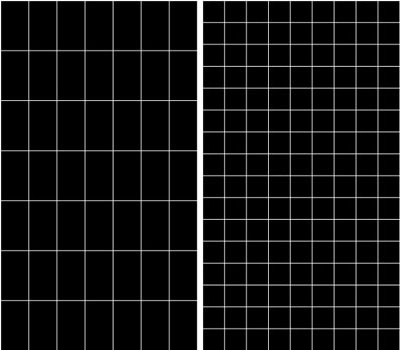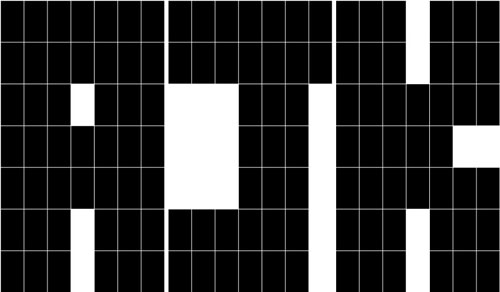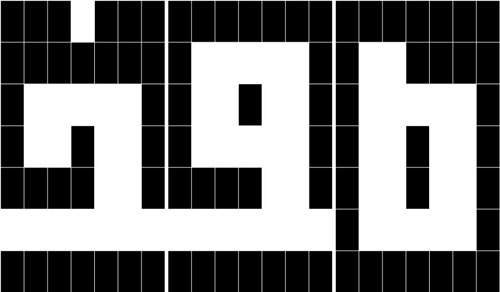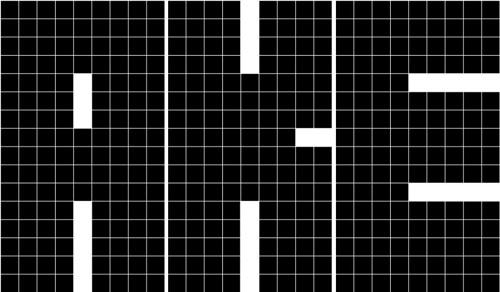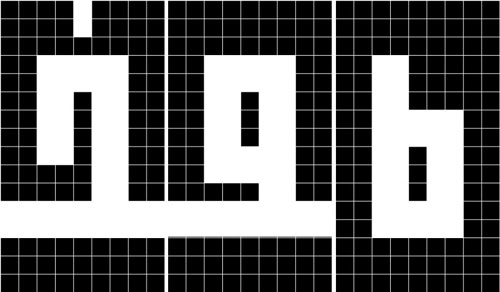Story Line™: 7 x 7 grid.
In the seven by seven grid, the rudimentary capital Latin letter forms are defined by white rectangles on the black grid to signify specific letters. Because of the fixed aspect ratio of a screen unit, all letters will have eqaul width. This means that, compared to their normal appearance in regular typefaces some will look compressed (or expanded) in the same space.
With white rectangles on the black grid, letter shapes appear as the result of cutting out holes in the solid black plane. On the other hand the illusion is created of white shapes in a black space.
Alternatively, the 7x7 grid offers a very basic way to create rudimentary Arabic glyphs. On the above mentioned black shape or background, these glyphs use the white as used to signify space as theit material to write with. The white signifies the glyph shape.
In the Latin, white signifies space, in the Arabic white signifies shape.
In Latin black signifies shape, in Arabic, black signifies space.
White and black can be inversed. Then white signifies shaoe in Latin, etc.
-----------------------------------------------------------
Story Line™: 9x16 grid.
The 9x16 grid snugly fits in the 9 by 16 aspect ratio with squares. This less crude grid might offer more options and variation in detailing and letter weight . Its odd and even devision and symetry aspect work differntly. Same concept approach on the layering of Latin and Arabic applies here as well.
It might be interesting to explore a few other grids. I tend to look for odd devisions, concerning symetric aspect of type building.
Max Kisman, Amsterdam , 20 May 2009
